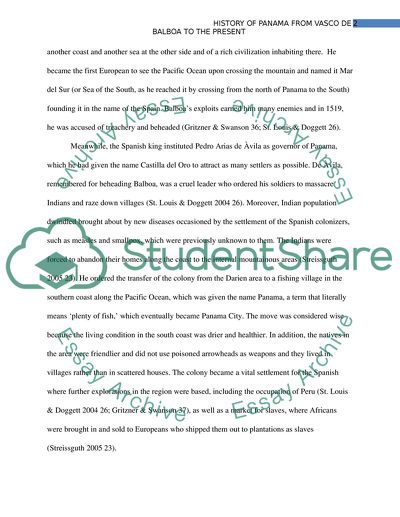Cite this document
(Historical Development Of Panama Term Paper Example | Topics and Well Written Essays - 2000 words, n.d.)
Historical Development Of Panama Term Paper Example | Topics and Well Written Essays - 2000 words. Retrieved from https://studentshare.org/history/1747536-history-of-panama-from-vasco-nez-de-balboa-to-today
Historical Development Of Panama Term Paper Example | Topics and Well Written Essays - 2000 words. Retrieved from https://studentshare.org/history/1747536-history-of-panama-from-vasco-nez-de-balboa-to-today
(Historical Development Of Panama Term Paper Example | Topics and Well Written Essays - 2000 Words)
Historical Development Of Panama Term Paper Example | Topics and Well Written Essays - 2000 Words. https://studentshare.org/history/1747536-history-of-panama-from-vasco-nez-de-balboa-to-today.
Historical Development Of Panama Term Paper Example | Topics and Well Written Essays - 2000 Words. https://studentshare.org/history/1747536-history-of-panama-from-vasco-nez-de-balboa-to-today.
“Historical Development Of Panama Term Paper Example | Topics and Well Written Essays - 2000 Words”, n.d. https://studentshare.org/history/1747536-history-of-panama-from-vasco-nez-de-balboa-to-today.


